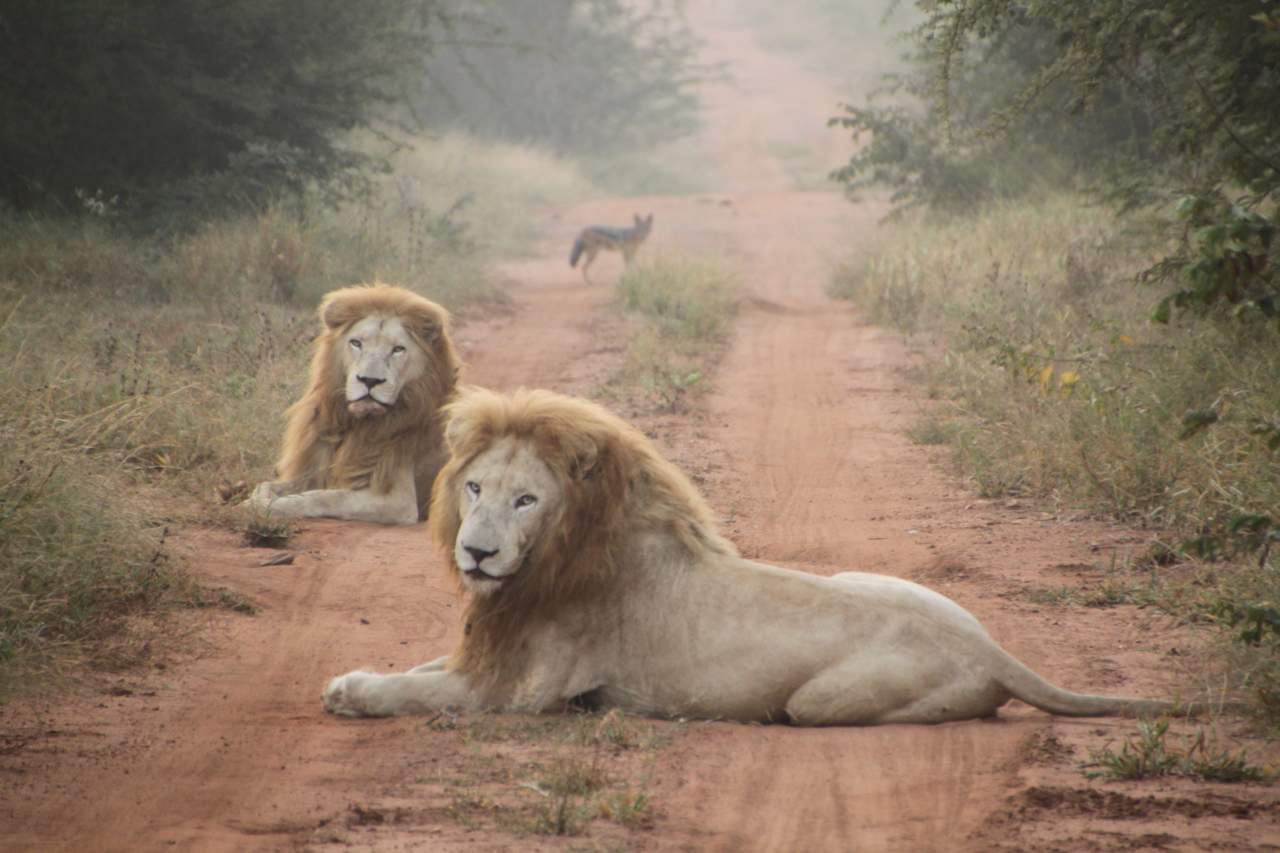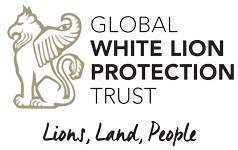
Linda Calls for an Urgent Moratorium on the Killing of Any of The Big Five
Following the well-attended colloquium held in South African Parliament on 21/22 August 2018, where stakeholders were brought together to discuss the impact of the captive breeding-to-kill industry, Linda addressed a letter to the Chairperson calling for a moratorium on the killing of any of The Big Five for a period of at least three years:
UPDATE: since sending this letter, the South African Parliament has called for a policy and legislative review on the captive-breeding-for-hunting industry and the lion bone trade. While this is welcome and exciting news, the Global White Lion Protection Trust will continue urging Parliament to revive its commitment (Gazetted in 2008) to protect White Lions in their natural habitat.
Click here for the 2008 Gazette
Honourable Chairperson Mohlopi Philemon Mapulane 3 September 2018
Portfolio Committee on Environmental Affairs Parliament of the Republic of South Africa
COLLOQUIUM 21/22 AUGUST 2018:
CAPTIVE LION BREEDING FOR HUNTING IN SOUTH AFRICA: HARMING OR PROMOTING THE CONSERVATION IMAGE OF THE COUNTRY
Dear Honourable Mr Mapulane
May we express our sincere appreciation to you and the Committee for organizing and chairing such a robust Colloquium, and for granting all parties and stakeholders the opportunity for constructive engagement in these legacy issues of critical importance to the future of our country.
We are grateful for the privilege of having attended these Parliamentary proceedings on lion policy, which we believe to be historic.
MORATORIUM
Arising from the Colloquium and the serious and complex issues raised there, and the apparent unlawful killing of the lion in the Umbabat Private Nature Reserve, we strongly recommend that a Moratorium on all killing of any of the Big Five animals be established in the area of the Associated Private Nature Reserves (APNR) for a period at least 3 years, in other words, long enough to enable the Minister of Environmental Affairs and Parliament to:
• review ongoing irregularities in current commercial trophy hunting legislation and policies, and the lack of enforcement thereof, taking place in these private nature reserves directly neighbouring the Kruger; and
• review process towards revised legislation that will become enforceable, with criminal sanction for contraventions. It will also enable the Minister and Parliament to take note of the points made by Members of Parliament at the Colloquium concerning the lack of protection afforded the iconic White Lions within the broader lion population. Such a Moratorium will permit:
• various important stake-holders due representation, including community stakeholders, currently unrepresented in the management and protection of this critically important national heritage animal, to make representations; and
• provide an opportunity to give attention to the substantial cultural importance alongside the conservation value of the unique White Lions, still to be protected by South African law.
We wish to emphasize the deep cultural and religious importance that the White Lions occupy in the lives of the local communities, resident within or adjacent to, or originating from the Timbavati/APNR area. The sustainable protection of the White Lions is, therefore, not just a wildlife issue, it is an intangible heritage belonging to the people of the area, and to South Africa. We would go further and venture to say that it is a Global Heritage. (See Point 2.5 below)
Our recommendation and desire to engage in the process which we describe above is thus motivated by the interests of both the White Lions themselves and such intangible heritage.
We would add that, in collaboration with the leadership of the local communities, we are pursuing the designation of our land and hopefully of the APNR as a Protected Area as defined in the National Environmental Management: Protected Areas Act and of the cultural aspect defined as “intangible heritage” in terms of the National Heritage laws.
THE WHITE LIONS
The White Lions occupy a distinctive niche within the wider lion population. The scientific research which established the White Lion “Genetic Marker” in 2013 was a collaborative genetic study, involving 7 different countries, led by Jason A. Turner, our Director of Ecology. Our objective in so-doing was to assist South Africa in having this genetic rarity protected by law.
Because the White Lion is primarily found in the APNR/Timbavati area – the endemic area of the White Lion – this genetic rarity has acquired iconic status amongst the people of the region. The Genetic Marker is carried by certain of the golden lions of that region and manifests itself periodically in the rare birth of white cubs. Such occurrences are viewed by the local Sepedi and Tsonga people as highly significant, and their spiritual importance is confirmed by many African record keepers of other tribal origins.
However, because of the rarity of their snow-white colour, White Lions have also attracted the attention of the hunting fraternity and have been captured or killed in the wild to the point of almost extinction. The writers’ experience with a leading Tsonga traditional healer alerted her to this destruction, and in partnership with the traditional healers of the region, founded the Global White Lion Protection Trust and initiated a scientific reintroduction program to re-establish the White Lions in their endemic Heartland.
As a leading international community-based organisation (048-299 NPO), with two decades of engagement in legislative processes regarding the management of lions and other large predators, the founding objective of our organisation is the protection of South Africa’s critically rare White Lions as a unique conservation and cultural heritage.
Briefly, by way of reference to the unique cultural and spiritual importance of the White Lions, we respectfully direct you to Minister of Justice, and Founder of the Kara Institute, Dr Matole Motsheka’s request for special consideration to be granted to the White Lions during the Colloquium, as an integral part of African religion guaranteed by the Constitution. [See letter, attached.]
Our expertise, both scientific and cross-cultural, pertains to the unique White Lions as a critically rare component of the unique biodiversity of the Kruger to Canyon’s Biosphere – itself is a UNESCO-Declared “Biosphere” region.
THE PROBLEM
The land owned by the Associated Private Nature Reserves (APNR) falls under the UNESCO-Declared Biosphere accreditation and forms part of the “Buffer Region” of private nature reserves bordering our country’s Kruger National Park, which have opened their fences to our national park, and national game.
As such, it should be pointed out that the APNR are not only beholden to South Africa’s own wildlife policy and legislation but are situated within a greater international conservation strategy of the world’s most important UNESCO- Declared “Biospheres”.
As a long-standing authority on this issue, we have been flagging up concerns about irregularities surrounding the commercial trophy hunting of lions in the APNR, dating back to 2000, and before. Over this period, lions from this sensitive wildlife region (specifically the White Lions and gene-bearing golden lions) have been artificially removed from their natural endemic habitat. These removals have been conducted through commercial trophy hunting and unauthorized means, including the capture and captive holding in newly established breeding-for-killing operations on the borders of the APNR.
Further details on these irregularities and the high incidence of disregard for ethical and ecologically-sustainable hunting protocols in the APNR will be made available for your consideration in an independent paper.
During the Colloquium, the APNR asked why trophy hunting on the private nature reserves was under scrutiny when the title of the Colloquium was: “CAPTIVE LION BREEDING FOR HUNTING IN SOUTH AFRICA: HARMING OR PROMOTING THE CONSERVATION IMAGE OF THE COUNTRY”
Although the connection may not be obvious, we venture to point out that the two issues are integrally connected.
Firstly, they have reference to the location and manner in which captive breeding-to-kill facilities (“Canned Hunting”) set themselves up in the first place; and then secondly, they have reference to how these facilities became legalized by DEA.
1 The beginnings of the breeding-to-kill lion industry
1.1 It has been established that the White Lions, and golden lions bearing the rare White Lion gene, were forcibly removed from their endemic habitat of the APNR over many decades1. This occurred, not only through the commercial trophy hunts which have been taking place within the APNR, but also through the first captive breeding-to-kill facilities established on the borders of the APNR. Lions were removed from their natural system into these facilities through nefarious means.
1.2 It is important to note, however, that every lion in this region could potentially be a bearer of the rare White Lion gene, and therefore the hunting or removal of any lion in the region threatens the survival of this endangered heritage. It’s highly likely that the most recently hunted lion (whether SKYE or not) was one of the last surviving carriers of the White Lion genetic code. But no one can prove this for certain until the body of the trophy hunted lion is made available for genetic testing.
1.3 Whether the hunted lion is a gene-bearer can be easily established now since the White Lion “Genetic Marker” has been identified.
1.4 Given the APNR’s privileged location as “Buffer Reserves” directly bordering our country’s primary protected area of the Kruger National Park, Government and the private sector would look to these private nature reserves to set and maintain the highest code of conduct. Since much of the game in the APNR migrates from the Kruger National Park and as such is national, not private, property, this code of conduct is particularly important in the case of trophy hunting, which was legalized in this region. Unfortunately, historically, this has been shown not to be the case. Since the APNR is the endemic region where South Africa’s unique White Lion heritage were born by natural occurrence, the question of hunting ethics becomes all the more critical.
1.5 We raise the question: Should private landowners, privileged enough to have White Lions and White Lion gene bearing lions on their land, be allowed to threaten the existence of this national heritage through private commercial trophy hunting?
1.6 Furthermore, we humbly ask, is it not Government’s duty to protect a unique conservation and cultural heritage? A heritage, moreover, which is regarded as sacred, not only to First Nations representatives within South Africa, but to all indigenous First Nations people, globally?
1.7 Under separate cover we wish to send you 8000 names, submitted by the Sepedi and Tsonga youth in our eco-cultural community centres. These names are specifically intended for the (estimated) number of lions currently held in captive breeding-to-kill facilities, amongst which are captive White Lions regarded by our communities as South Africa’s proudest legacy animal. In our view, it is unbefitting of any respectful tradition across all cultures held by our nation that lions are being bred as commodities to be killed in a production line, relegated no more than “numbers” by DEA. By way of dignifying the lions currently held in these captive breeding-to-kill facilities, we respectfully request that, along with scientific identification, each lion be granted a name – thereby upholding the African tradition of honouring our wildlife heritage.
[Kindly refer to our letter to Mrs Nosipho Ngcaba, Director General of DEA, dated 20th July, attached.] 1 Amongst other references, see Chris McBride Operation White Lion.
2. The legalization of the breeding-to-kill lion industry
2.1 It is important to point out that, historically, the processes originally followed by our current Government showed commitment to ensuring the survival and well-being of this unique White Lion heritage, both a national and global heritage.
2.2 Between 2006 and 2008, we raised concerns with Governing authorities, and on 20 February 2008, a Parliamentary Meeting of the Portfolio Committee was called to address this issue, chaired by Rev P Moatshe (ANC, North West) and attended by the Chairperson of the Council of Provinces, MP Mninwa Mahlangu [Link to Gazette attached below2.]
2.3 At this Portfolio Committee Meeting, ANC Parliamentary members lodged concerns that the Kruger National Park was failing to take responsibility for the protection of the White Lions.
2.4 Furthermore, it was gazetted that:
The Chairperson assured the Trust representatives [Global White Lion Protection Trust] that the Committee fully supported their efforts and would ensure that the white lions were protected by legislation. He advised that the National Parks must be prepared to answer for their failure to present to the Committee. He added that the protection and conservation of the white lions had to be treated a matter of urgency, given its conservative, eco-tourism and cultural value.
2.5 One year later, the South African Government’s position was ratified and supported at an international World Wilderness Congress (Wild9) held in 2009, attended by delegates from 51 countries, where a RESOLUTION was passed to have the White Lions listed for protection by international governments “and all appropriate bodies worldwide”. This RESOLUTION was tabled by indigenous nations from around the globe and endorsed by multiple scientific/and conservation entities, including the Worldwide Indigenous Science Network, and the Global Big Cat Alliance.
2.6 While the intention is not to link current landowners to these historical crimes, it is important to point out that there is a history of unpoliced and unregulated illegal activity forming the foundations of the current captive breeding- to-kill industry.
2.7 This unpoliced and unregulated illegal activity has caused immense harm to the endangered wild populations of White Lions, and the APNR current commercial trophy hunting of White Lions, or gene-bearing golden lions, is further jeopardizing this heritage.
2.8 In that same year, underscoring Government’s responsibility towards conserving South Africa’s rare White Lions as a living heritage, the Bloemfontein High Court ruled in favour of the South Africa Government to prohibit the practice of captive breeding-for-killing of lions (then termed: “Canned Hunting”).2.8 However, South African policy drastically changed one year later, after the astonishing Supreme Court ruling (Nov 2010), when the government’s efforts to prohibit the captive lion industry were overruled in favour of The Predators Breeding Association appeal, the proponents of the captive breeding-for-killing of Lions.
2 20 February 2018, Gazette attached in MS Word.
2.9 Since this time, South Africa’s unique White Lion heritage has been systematically decimated by this captive breeding-for-killing industry, a newly formulated methodology of exploitation of wildlife, which has no precedent in international conservation legislation.
2.10 The ground covered by the Colloquium was not always palatable, and we thank you for interrogating those uncomfortable questions around the links between trafficking, traders and crime syndicates. With entrenched vested interests at multiple levels in these cross-border dealings, illegal poaching and legalized trade have established linkages. We venture to say that some of this grey area between legal and illegal dealings has its roots in the initial establishment of these captive breeding-to-kill facilities on the borders of the APNR.
2.11 One example is the facility established by Albert Mostert who was brazenly removing lions from the APNR, and which later became best known for the “Lion’s Den Trial” in 2004/5, following an incident when a staff member was thrown to his starving caged lions.
We wish once again to express our sincere appreciation for the opportunity to present on this issue of vital importance to our living wildlife heritage for future South Africans.
Sincerely,
Linda Tucker
CEO, GLOBAL WHITE LION PROTECTION TRUST







No Comments